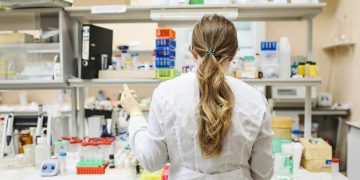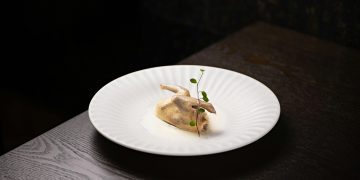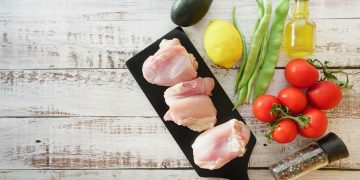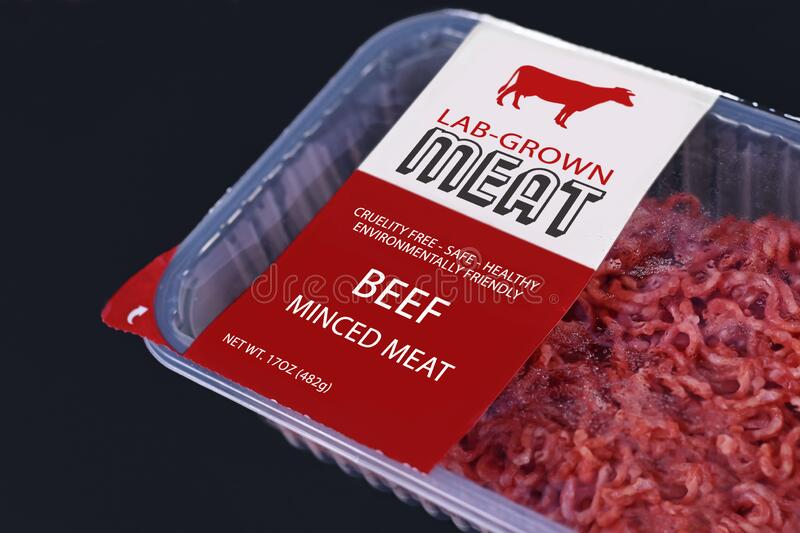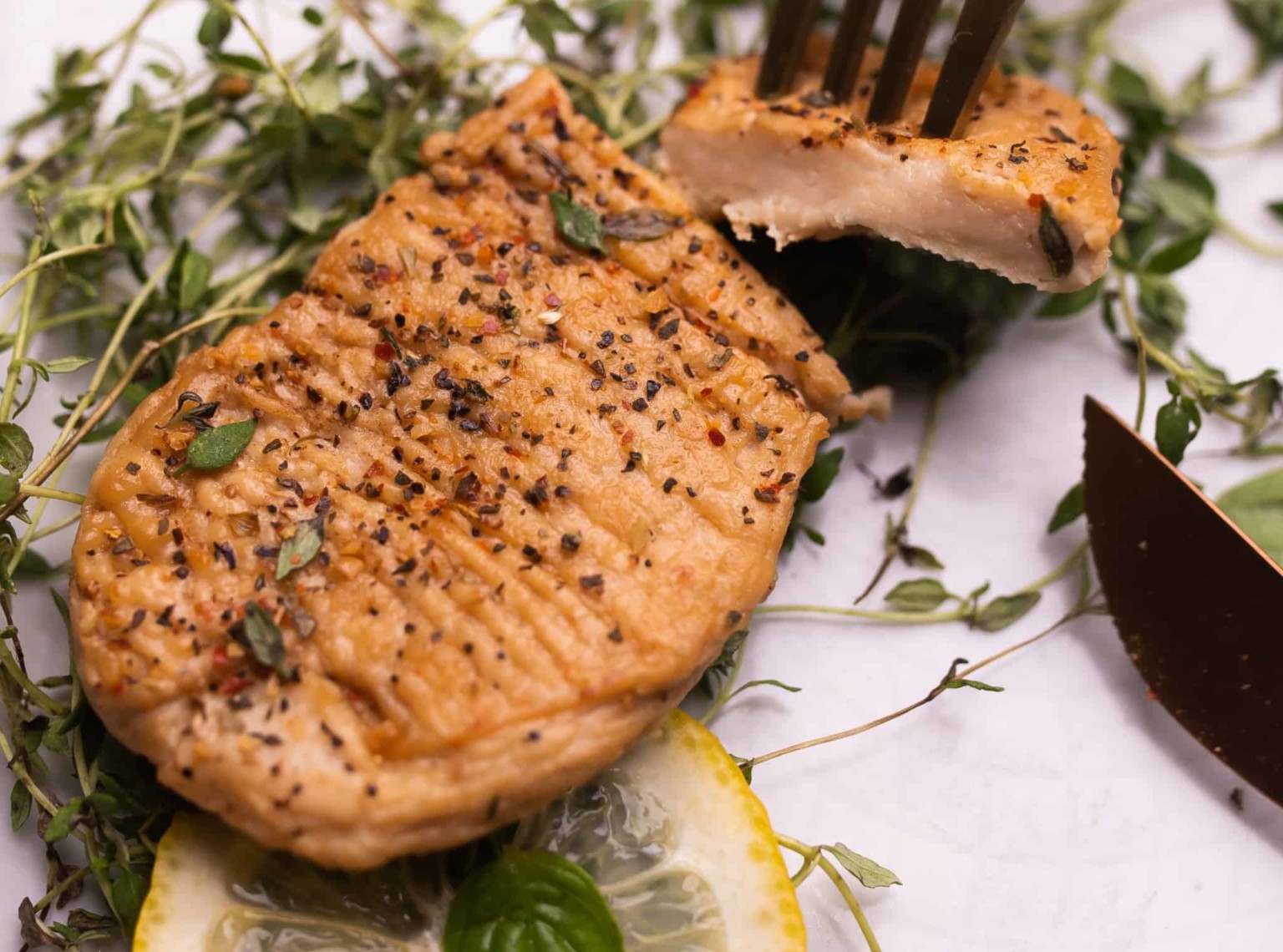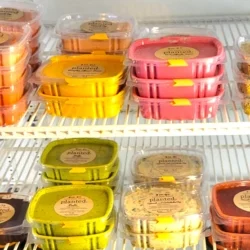A South African cultured meat start-up company, Mogale Meat, has created the first cell-based chicken on the continent after only 18 months of research and development. The lab-grown chicken breast is the company’s entry for the $15m XPRIZE Feed the Next Billion competition and has earned it a place in the semi-finals as the only entrant from Africa. The founder and CEO of the Mogale Meat, Dr Paul Bartels, told BizNews the company grew chicken in the lab for the competition, but its main focus is on cultivating game meat products. He hopes products like a Big 5 burger and Springbok carpaccio could be developed and the company is working towards establishing bioreactors in neighbourhoods, which would be like a local mini meat ‘brewery’. – Linda van Tilburg
The first lab grown chicken meat in Africa, but the aim is wildlife products
We’re very excited that we showcased our first cultivated chicken product just a couple of days ago. We are actually part of the XPRIZE Feed the Next Billion, an international competition. We’re the only team from the continent of Africa, which is very exciting. The prize is $15m to produce either chicken or a fish cutlet. We are in the semi-finals, so we’ve got eight to nine months to go until they choose 10 finalists to go ahead for a next year to produce a product. But more excitingly, we are working with wildlife.
The whole idea of this company, which was started in 2020, is to use our natural resources of wildlife. In other words, our game meat. The [concept] came from, well, first of all, my background as a veterinarian. I’ve been working mostly on wildlife and again in the conservation field. So, I worked for the Endangered Wildlife Trust for 10 years and again, working on individual animals and then building up a biobank. I built up South Africa’s National Wildlife Biobank, which is now sitting with SANBI. Of course, in that way, you can do a lot more conservation because you’re collecting samples and going from individual then to populations. A couple of years ago, I read about Marc Post from the Netherlands who produced that first burger [made of] cultivated meat. The idea kind of sat with me from that time. And two or three years ago, I decided, well, this could be a really great way to further contribute to conservation. In other words, it ticks a number of the boxes of the UN Sustainable Development Goals. But what about our biodiversity? What about our wildlife? And again, tackling it from a human side, the masses, shall we say because more people are eating meat these days and our population in Africa is growing. People want to eat meat, so give them what they want but in such a way where one can protect the natural environment, biodiversity and wildlife. That’s kind of our ethos. It is where we want to go to, where we want to play a role in Africa. So yes, it is very exciting.
Cultivated meat is not fake meat and it can be produced anywhere
If we take a small biopsy of a young animal; that young animal gets to live and then within that sample, there are stem cells. Besides the current muscle cells, there are also some stem cells that multiply and turn into muscle. As the animal grows up, these stem cells multiply and form myocytes, which are muscle cells. These coalesce to form myotubules. The same with a fat, so the fat cells multiply your mesenchymal stem cells and then turn into fat. So, you are using this potential. I think a good example would be, for instance, a cow. If you look at the cows – the ovaries in an adult cow that has already had a couple of calves – by the time it dies, it has still got about 12,000 egg cells in the ovaries. We can think of the muscles in a similar way. There are all these stem cells that are within muscles and this production potential is there. There is a bigger potential than necessarily what the animal itself needs for its lifespan. So, what we are doing is using this potential to produce more meat and, in that way, produce meat almost anywhere. Remember, you can put these plants in the middle of an urban area; as opposed to, let’s say, an abattoir, which has quite a lot of waste, uses a lot of water and you don’t have those smells. You can put these plants where people are and it is real meat. So, this is not what some people might call fake meat. If you talk about plant-derived meat products – Beyond Burger, Impossible Burger – they are made purely out of plant material, whereas this is actual animal cells: the fat cells, muscle cells, the fibroblast, the connective tissue that you find between muscle cells. Again, from what companies have produced in other countries, when they have had tastings and invited a lot of people to test, well, it’s meat, so it tastes like meat because it is meat.
What does it taste like?
We currently have a blend of the actual cells together with an edible substrate. In our case, we use mushroom substrate. We are busy improving the taste because at the end of the day, and especially by the end of this year and as an entrant of this XPRIZE competition, a tester should not be able to tell the difference between conventional chicken meat. We are working towards that. We are getting there, so it’s very exciting. As I mentioned, our other project is the wildlife project, but that is separate to the chicken. We only opted for chicken because our choice with the XPRIZE was either chicken or fish but as I mentioned, our signature products are going to be wildlife products.
No killing of animals, no greenhouse gases, less land used to grow animal feed, less water
A lot of meat is eaten across the world and in Africa. One of the biggest disadvantages is that because there are more people, more meat is being eaten, which means you have to produce more meat. If we look at the livestock industry, typically you have cattle in feedlots and in order to feed those cattle, you need to plant a lot of maize, which requires a huge amount of land. Of course, one of the main constituents is maize, which is not the natural diet of ruminants like cattle. They are more grass feeders, but producing more cattle on grass is expensive and this is why companies have gone to feedlots. What this does is it saves all of that land. You don’t require land to put animals in feedlots. Certainly, from an animal welfare point of view, we are working in the right direction to eliminate systems like your factory farming; these are not only cruel, but also produce a huge amount of greenhouse gases and food. That’s a big advantage.
It takes a ton of water to produce a kilogram of beef steak
As you probably know, methane is one of the more serious greenhouse gases. More methane is produced by the livestock industry than all the transport industries in the world put together. Again, the International Panel on Climate Change has come out and mentioned in a recent report that cultivated meat could play a role going forward. It is one of the quicker methods than, let’s say, to burning of coal with regard to the environment. That is going to play a massive role. And then, it takes over a ton of water to produce a kilogram of steak. With cultivated meat, there is massive recycling. There aren’t all those by-products that are produced in conventional meat production. It’s estimated that you would probably use 90% less water to produce the same amount of meat. If we look at a map of South Africa, a water-deficient country, the whole eastern side – the high rainfall area – is largely planted with crops to feed animals in feedlots. By using this method, you are optimising water, you’re optimising land use. In other words, the footprint of your production is 90% less. This will help with the population increasing and food security. Really tackling conservation from a people side as opposed to focusing on the animal. But we know that the biggest problem is people … all of us. So, if we can have systems whereby food security is taken care of, without chopping up more of our natural environment, well, that’s a win-win for all.
Challenges ahead of scaling cultivated meat production
We need investment. This is a young industry. If you look at the companies across the world, there are probably more than 150, maybe even 200 by now; some of those companies being in stealth. So, what’s really needed is more investment. The private sector has taken the lead in this. Looking at the investments that have gone into those companies, including ourselves, private companies are leading the way. The good news is several universities have woken up to this. Universities in the US – UC Davis, Vermont and various other universities – have started courses, undergraduate and graduate programmes for cultivated meat, which is very exciting. In Europe and the UK, there are the University of Bath and Maastricht University in the Netherlands. In Singapore and Israel, there are also universities. Public sector universities are coming to the fore because you need a pipeline of trained people. Scaling up is still a challenge because you have to scale up your bioreactors. Engineering is needed for that. And, of course, the media to grow these cells. A lot of the research has been done on what is known as a farm grade-type media for the cells because of the drug research. But you need a very pure, good quality media as this is food grade, shall we say. It’s a feed. It’s like an animal walking in the field picking up grass and putting it into their rumen and then processing that. It is not a case of: hey, I want to produce food. Currently, in terms of food, we think of a farm, an abattoir and butchers, and shops. Here there are lots of technical issues but the good news is that since 2019, this has really started to grab people.
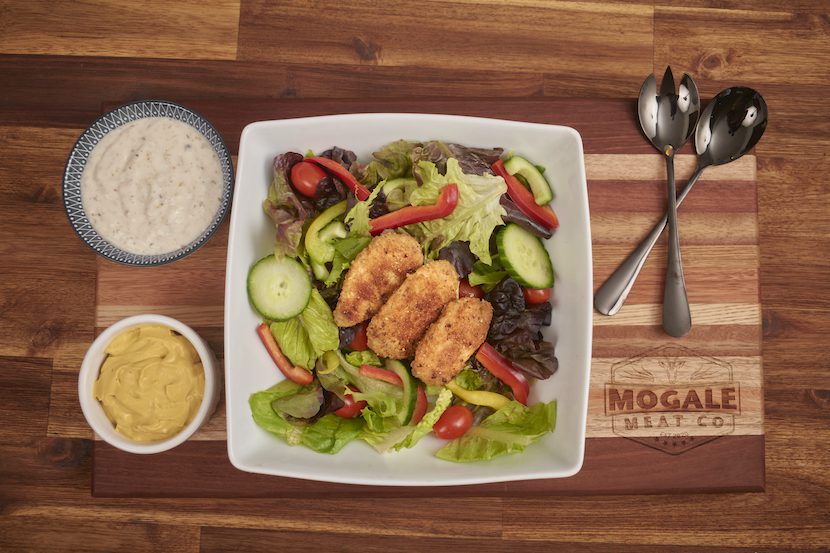
The young are keen to embrace cultivated meat, older people like their Karoo lamb chops
We have to look at the consumer. At the end of the day, the consumer will buy this product and there have been quite a few studies. Many, especially the younger generations, believe this is great and they’re keen to try this new product. A lot of people like myself – a bit older – are a little more reserved. We want to eat traditional food; the sort our mothers made for us like lovely Karoo lamb chops or whatever. There will be a time in the near future that you’ll be able to have that without it having gone through that whole process: animal welfare, the environment, the water use. I think as more people start eating cultivated meat, they will realise it is meat. This is not about funny laboratory people in white coats making this stuff. It will be like a brewery, where we get our beer from. There are micro-organisms in these bioreactors; why shouldn’t we adapt fairly easily to that? I believe many people will adapt quite quickly to this and don’t foresee a big problem. Obviously, from a regulatory point of view, countries have to adapt. Singapore is the only country with these regulations right now, but the USDA and FDA in America is working hard to get these products approved. I think a lot of countries will follow quite soon after that.
A future of Springbok carpaccio, Big Five burgers, mini meat plants like breweries
We finished our pre-seed funding, so in this year, we’re going to open our seed funding call. Of course, yes, the XPRIZE is very important for us. We are up against a very big boys that have already produced kilograms of chicken. It is daunting but we feel quite excited that we have a unique company. Then, we are bringing out our signature wildlife products.
We are very excited about it: a Big 5 burger, Springbok carpaccio. Obviously, the first things will be test tastings and making it available to the people working on the regulatory issues. We are busy working on that at the moment, so it can be more formalised. In the next two to five years, we believe high-end restaurants will be our clients. We have got a dual strategy, where we want to bring these products to the people of South Africa, developing mini plants. There will be centralised plants that will dispatch these concentrates to a mini plant based where people are. People need the food as close as possible. We won’t need these massive refrigeration trucks transporting carcasses. We foresee, even in the next five or six years, the transportion of cell concentrates by drone to these mini plants in different areas, getting it into the rural areas. Although, this is slightly more long term because we need to bring the price down. We need to get to price parity with conventional meat, and then there are opportunities to reduce it even further. It is a daunting task, but also very exciting.



